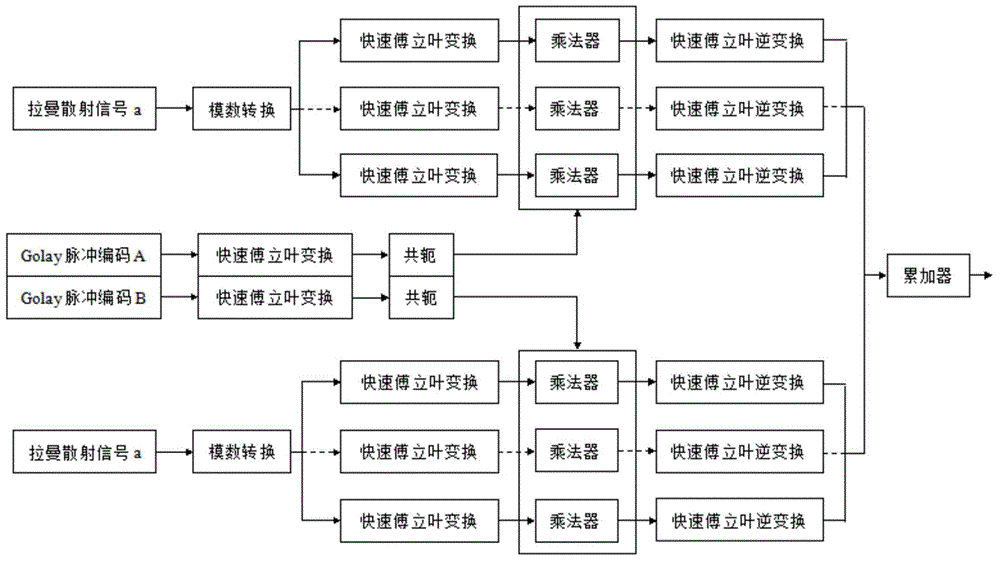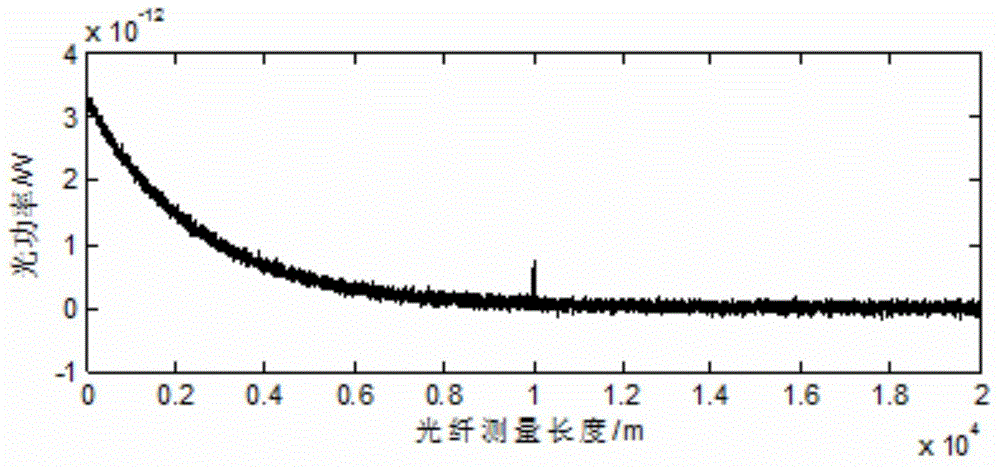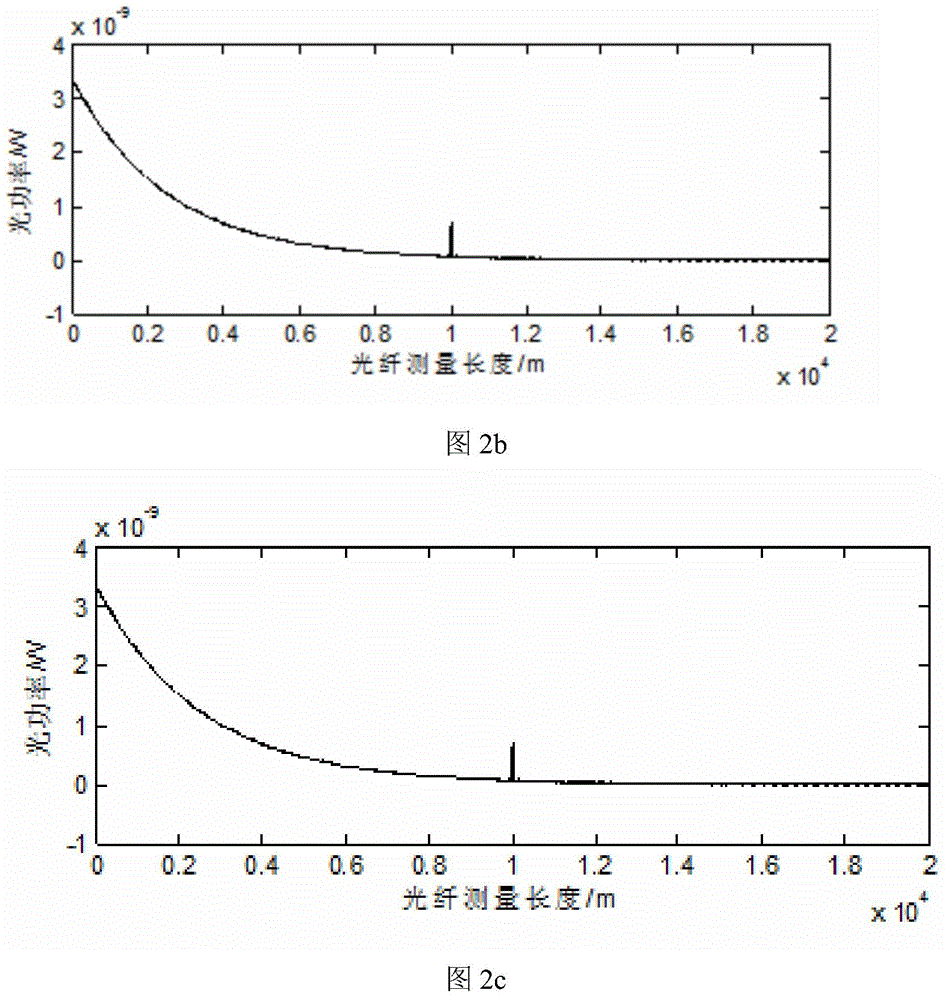Decoding algorithm of optical fiber Raman temperature sensing system based on relevant pulse code
A sensing system and pulse coding technology, applied in the field of optical fiber sensing, can solve the problems of large computational load and low reliability.
- Summary
- Abstract
- Description
- Claims
- Application Information
AI Technical Summary
Problems solved by technology
Method used
Image
Examples
Embodiment Construction
[0031] like figure 1 As shown in the figure, the decoding algorithm of the optical fiber Raman temperature sensing system based on correlation pulse coding first uses the overlap-and-save method to segment the received two sets of bipolar Raman scattering signals, and then divides each segment The segment signal and the Golay pulse code sequence are subjected to FFT-based circular correlation calculation, and the correlation results of each segment are combined in chronological order, and finally the two sets of calculation results are correspondingly superimposed to complete the denoising process of the entire system, including the following steps:
[0032] (1) Sampling the Raman scattering signal.
[0033] Inject Golay unipolar detection pulse sequence A into the sensing fiber successively + 、A - 、B + 、B - , the corresponding Raman scattering signal a is obtained after real-time collection by the detection module + 、a - , b + , b - . let a=a + -a - , b=b + -b - ...
PUM
 Login to View More
Login to View More Abstract
Description
Claims
Application Information
 Login to View More
Login to View More - R&D Engineer
- R&D Manager
- IP Professional
- Industry Leading Data Capabilities
- Powerful AI technology
- Patent DNA Extraction
Browse by: Latest US Patents, China's latest patents, Technical Efficacy Thesaurus, Application Domain, Technology Topic, Popular Technical Reports.
© 2024 PatSnap. All rights reserved.Legal|Privacy policy|Modern Slavery Act Transparency Statement|Sitemap|About US| Contact US: help@patsnap.com










